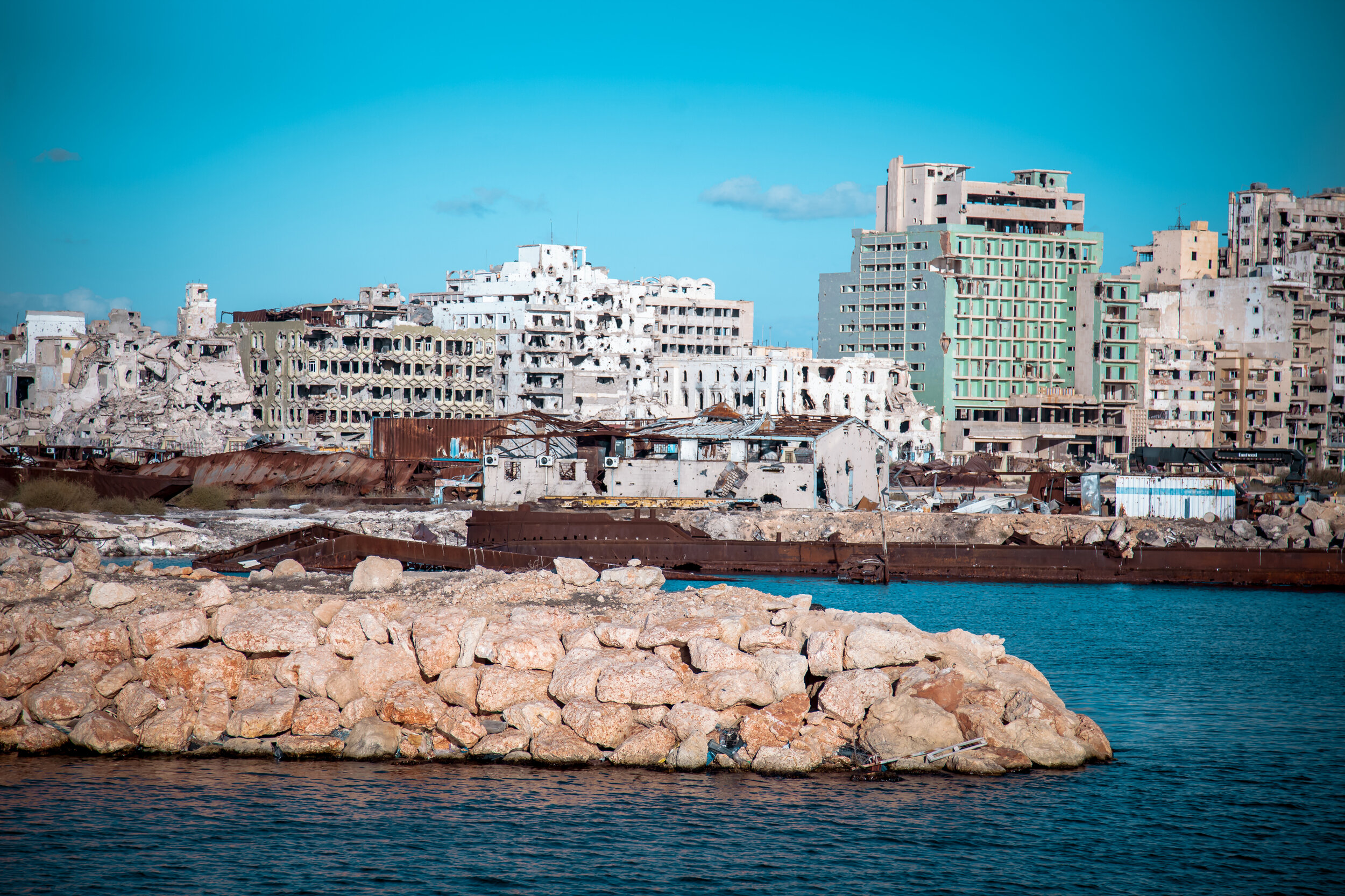modern libyan ARCHITECTURE.
In the early 2000s, several notable high-rises and skyscrapers befitting of a capital city were introduced to the Tripolitanian landscape, indicating a return to architectural design which allocated value to both function and aesthetics.

Skyline of Modern Day Tripoli
The Corinthia Hotel, Tripoli
Notable examples include the Corinthia Hotel (2003), designed by Malta-based architects Xuereb Martin & Associates;
JW Marriott Hotel, Tripoli (aka the Daewoo building)
and the JW Marriott Hotel Tripoli (aka the Daewoo building) designed by South Korea's Daewoo Engineering and Construction in partnership with a Libyan state investment fund, which lamentably opened on February 15, 2011, mere days before the civil war commenced, requiring the Marriott Group to evacuate the hotel’s guests and staff to Jordan two weeks later on a chartered flight1.
Preserving Libya’s Architectural Heritage.
Numerous culturally important edifices have been damaged over the past decade as Libya’s civil conflict continues, particularly in Benghazi, which has seen significant fighting. A lack of public security forces to ensure the preservation of these wonderful buildings for future generations has left the majority of Libya’s significant buildings unguarded and open to further damage and decay.

Benghazi, 2016.
FOOTNOTES.
Wikimedia Foundation. (2021, July 1). JW Marriott TRIPOLI. Wikipedia. https://en.wikipedia.org/wiki/JW_Marriott_Tripoli.


